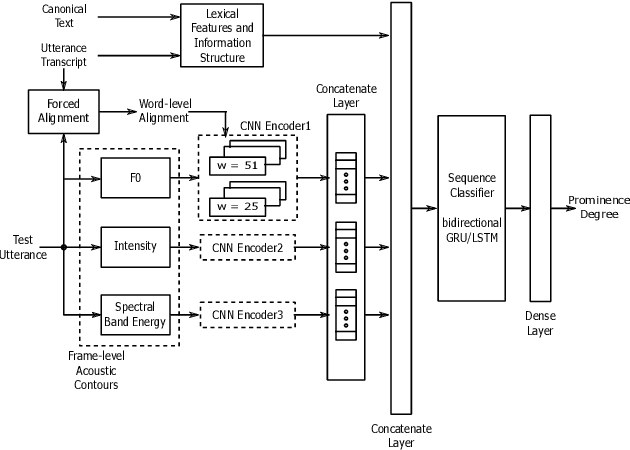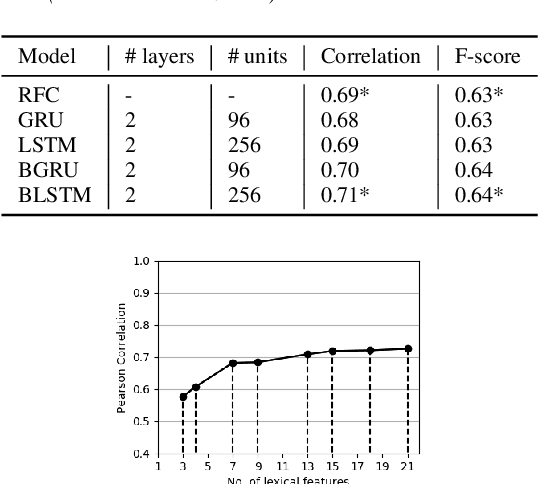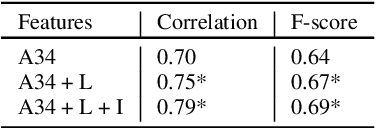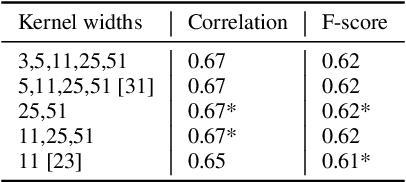Deep Learning For Prominence Detection In Children's Read Speech
Paper and Code
Oct 27, 2021



The detection of perceived prominence in speech has attracted approaches ranging from the design of linguistic knowledge-based acoustic features to the automatic feature learning from suprasegmental attributes such as pitch and intensity contours. We present here, in contrast, a system that operates directly on segmented speech waveforms to learn features relevant to prominent word detection for children's oral fluency assessment. The chosen CRNN (convolutional recurrent neural network) framework, incorporating both word-level features and sequence information, is found to benefit from the perceptually motivated SincNet filters as the first convolutional layer. We further explore the benefits of the linguistic association between the prosodic events of phrase boundary and prominence with different multi-task architectures. Matching the previously reported performance on the same dataset of a random forest ensemble predictor trained on carefully chosen hand-crafted acoustic features, we evaluate further the possibly complementary information from hand-crafted acoustic and pre-trained lexical features.
 Add to Chrome
Add to Chrome Add to Firefox
Add to Firefox Add to Edge
Add to Edge